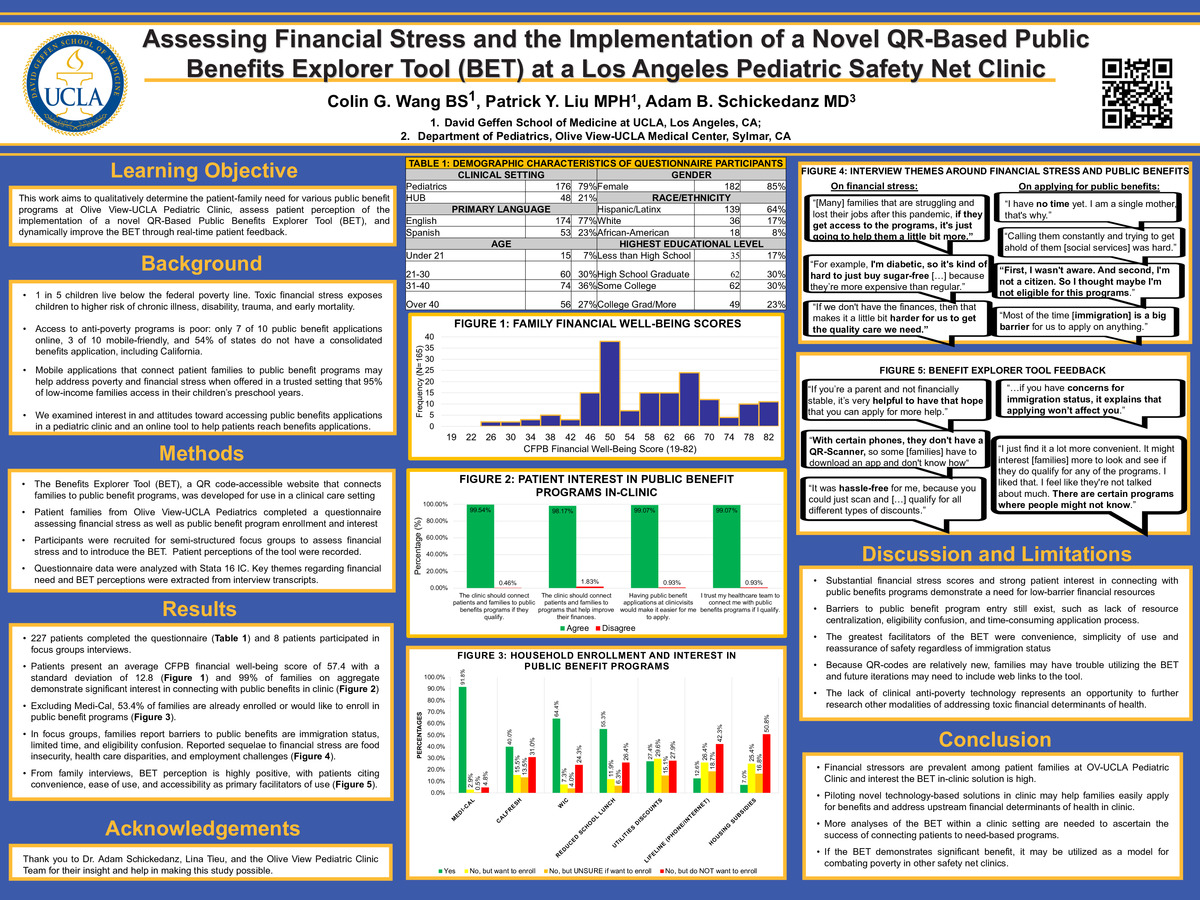-
Author
Colin Wang -
PI
Adam Schickedanz M.D. Ph.D.
-
Co-Author
Patrick Liu MPH
-
Title
Assessing Financial Stress and the Implementation of a Novel QR-Based Public Benefits Explorer Tool (BET) at a Los Angeles Pediatric Safety Net Clinic
-
Program
STTP
-
Other Program (if not listed above)
-
Abstract
Background: In the United States where 1 in 5 children live below the federal poverty line, toxic financial stress exposes children to significantly higher risks of chronic illness, physical impairment, trauma, and inter-generational harms to well-being. Though easily accessible public benefits programs can buffer the toxic stress of poverty, access to the social safety net remains poor, as only 7 of 10 public benefit programs are online, 3 of 10-mobile friendly, and 54% of states do not have a consolidated benefits application. Mobile applications that connect families to public benefit programs may address poverty and financial stress when offered in a trusted setting that 95% of low-income families access in their children’s preschool years.
Methods: Partnered with non-profits Alluma and One Degree, we piloted the Benefits Explorer Tool (BET), a QR code-accessible website that connects families to public benefit programs, at Olive View-UCLA Pediatric Clinic. At OV-UCLA, we conducted a community financial stress evaluation and an implementation assessment of the BET through questionnaires and semi-structured focus group interviews with patient families. Key themes surrounding financial needs were analyzed, and patient feedback of the BET was used to dynamically improve usage in real-time.
Results: Patient families reported a mean CFPB Financial Well-Being Score of 57.4 with a SD of 12.8. 99% of families on aggregate demonstrated significant interest in connecting with public benefit programs in clinic. Excluding MediCal, which all patients at OV-UCLA are enrolled in, 53.4% of families are already enrolled or would like to enroll in public benefit programs. Key themes from interviews about financial stress include food insecurity, health disparities, and employment challenges; themes about barriers to public benefit programs include immigration status, time, and eligibility confusion. Patients report a positive experience with the BET in focus groups, citing convenience, ease of use, and accessibility as primary facilitators.
Conclusion: Though financial stressors are prevalent among patient families at OV-UCLA, the BET may be an important tool for connecting families to public anti-poverty programs. This technology represents an opportunity to further combat financial factors of health in other safety net clinics. -
PDF
-
Zoom

